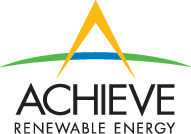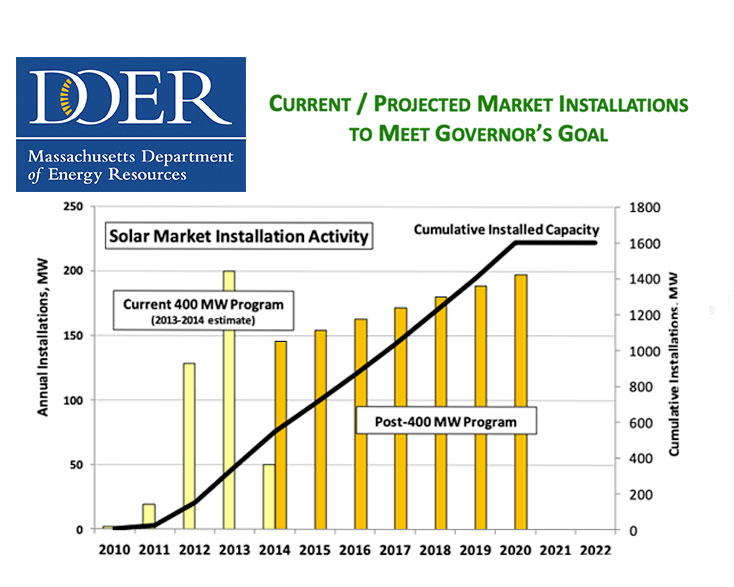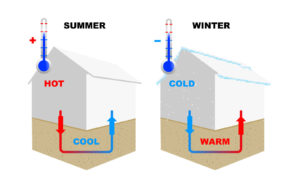Important changes are coming for the Massachusetts DOER Solar Renewable Energy Certificates (SREC) program. As expected, the DOER is in the process of shifting from the existing SREC-I regulations to a new phase suitably called SREC-II. A final policy design of the new SREC-II program was released on December 13, 2013. The DOER Commissioner has released some highlights. These changes are described in greater detail on the SRECTrade website.
What Changes are Expected?
Most importantly, the Patrick-Murray Administration has revised its cumulative installed solar power capacity goal from 400 MW to 1,600 MW by 2020. Currently, just under 400 MW of solar power have been installed since the inception of the program.
SREC rates will vary depending upon project size and other considerations – this will allow smaller projects to receive more SRECs on a per MWhr basis than larger projects. The SREC factor will range from 1 SREC per MWhr produced for residential and community scaled projects to 0.8 SREC per MWhr for larger landfill or brownfield sites. The SREC factor for certain atypical projects that do not meet specific Market Sector criteria could drop as low as 0.7.
Solar Credit Clearinghouse Auction (SCCA) prices and Alternative Compliance Payment (ACP) rates will continue to decline over the next 10 years with the SCCA price dropping from $300 to $199/MWhr and the ACP rate declining from $375 to $257/MWhr. The SCCA is the Massachusetts market’s floor value established on a yearly basis for the semi-annual SREC clearinghouse auctions. The ACP is the SREC compliance rate established on a yearly basis for electricity producers who do not purchase required SRECs from providers in order to maintain their energy portfolio requirements.
Other changes that are anticipated include a provision for no forward SREC minting for residential properties. Previously, the DOER allowed residential projects to create or bank up to 10 years worth of SRECs from the onset of the project. Also, no competitive SREC factor adjustments will be allowed for larger scale projects. All assigned SREC factors will remain fixed. Finally, the Grant Program for Directly Owned Residential Facilities will remain in place. The original August 2013 SREC-II draft did not allow for a continuation of this grant program. However, the program has survived the cut and will continue to allow for residential owners with 3rd party leasing or PPAs to move towards system ownership.
So What Does this All Mean?
Although changes to the Solar Renewable Energy Certificates (SREC) program have been anticipated for some time, these changes will ensure that the Massachusetts SREC program will remain among the nation’s best and at the forefront of the global push for greener, healthier energy. Expanding the goal solar power installed in Massachusetts from 400 MW to 1,600 MW by 2020 will only stabilize SREC values and rates moving forward. Now that that Final Design document has been released, a public hearing and comment period will follow. The DOER anticipates that SREC-II will become effective by the end of the first quarter of the year.



